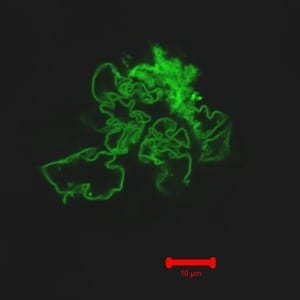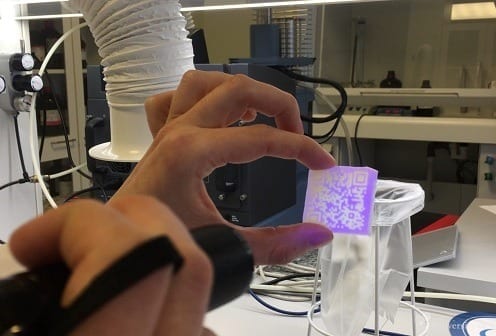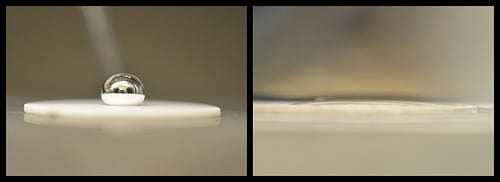
The work offers a promising new way to fabricate materials for drug delivery and tissue engineering applications.
Researchers from Carnegie Mellon University have developed a novel method for creating self-assembled protein/polymer nanostructures that are reminiscent of fibers found in living cells.
The work offers a promising new way to fabricate materials for drug delivery and tissue engineering applications. The findings were published in the July 28 issue of Angewandte Chemie International Edition.
“We have demonstrated that, by adding flexible linkers to protein molecules, we can form completely new types of aggregates. These aggregates can act as a structural material to which you can attach different payloads, such as drugs. In nature, this protein isn’t close to being a structural material,” said Tomasz Kowalewski, professor of chemistry in Carnegie Mellon’s Mellon College of Science.
The building blocks of the fibers are a few modified green fluorescent protein (GFP) molecules linked together using a process called click chemistry. An ordinary GFP molecule does not normally bind with other GFP molecules to form fibers. But when Carnegie Mellon graduate student Saadyah Averick, working under the guidance of Krzysztof Matyjaszewski, the J.C. Warner Professor of Natural Sciences and University Professor of Chemistry in CMU’s Mellon College of Science, modified the GFP molecules and attached PEO-dialkyne linkers to them, they noticed something strange — the GFP molecules appeared to self-assemble into long fibers. Importantly, the fibers disassembled after being exposed to sound waves, and then reassembled within a few days. Systems that exhibit this type of reversible fibrous self-assembly have been long sought by scientists for use in applications such as tissue engineering, drug delivery, nanoreactors and imaging.
“This was purely curiosity-driven and serendipity-driven work,” Kowalewski said. “But where controlled polymerization and organic chemistry meet biology, interesting things can happen.”
Read more . . .
The Latest on: Reversible fibrous self-assembly
[google_news title=”” keyword=”Reversible fibrous self-assembly” num_posts=”10″ blurb_length=”0″ show_thumb=”left”]
via Google News
The Latest on: Reversible fibrous self-assembly
- Self-assembly of complex systems: Hexagonal building blocks are betteron April 4, 2024 at 8:18 am
Gaining a better understanding of the principles and mechanisms of this self-assembly is important for the development of new applications in domains such as nanotechnology and medicine.
- The Assemblyon March 27, 2024 at 7:04 am
The Assembly sees a cast of thirty-five interviewers who are autistic, neurodivergent or learning disabled, question an A-list celebrity for one extraordinary TV interview. In this half-hour ...
- How to Use a Self-Cleaning Oven Feature Safely and Effectivelyon January 30, 2024 at 4:00 pm
Don't put off this cleaning project any longer! Luckily, self-cleaning ovens do most of the work for you. Is last night’s lasagna still lingering in the air after your bubbly, cheesy masterpiece ...
- Self-assembly is ready to rollon January 10, 2024 at 9:58 am
In the effort to make better and less expensive optoelectronics devices molecular self-assembly proves to be a solution — in solution. You have full access to this article via your institution.
- Exploring the benefits and applications of self-assemblyon April 25, 2023 at 10:58 am
One increasingly popular method is self-assembly. This process involves the spontaneous organization of individual components into a larger, functional structure without the need for external control ...
- How Self-Worth Affects Your Salaryon May 11, 2016 at 7:00 am
Yes, you read that correctly. Shanelle, suffering from extremely low self-worth, was intimidated by the responsibilities of her role and felt incapable, despite regular encouragement from her ...
- CHEN.5240 Self Assembly and Nanotechnology (Formerly 10.524)on December 4, 2015 at 6:48 pm
This course will describe two of the most fast-growing area/fields with both fundamental importance and practical relevance: self-assembly and nanotechnology. The first half of the course will discuss ...
- Self-Assemblyon May 1, 2015 at 2:48 am
Functional materials can be created with rational self-assembly of building blocks over a broad range of length scales, from small molecules and polymers to nanoparticles and nanowires. Northwestern ...
via Bing News










